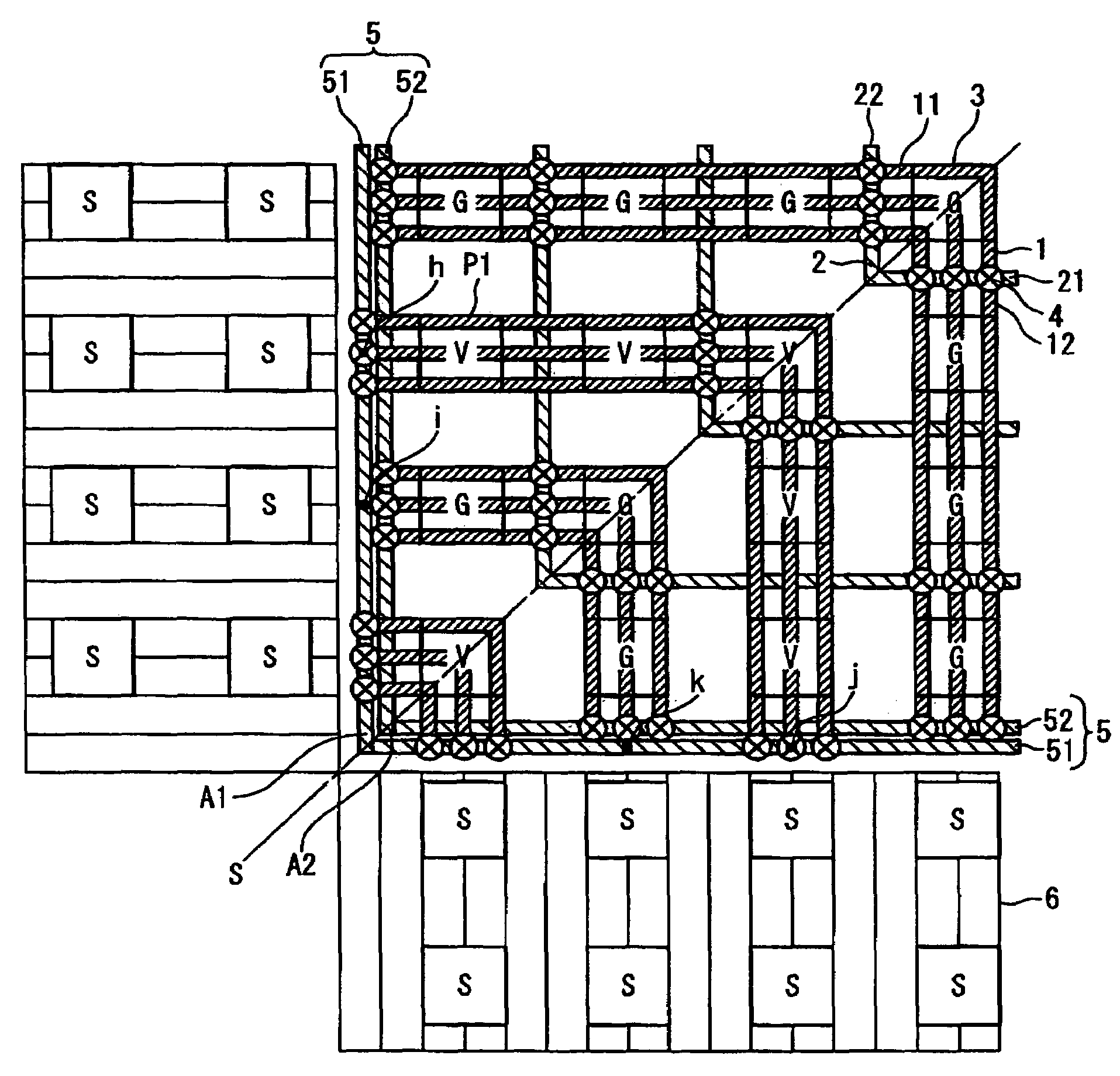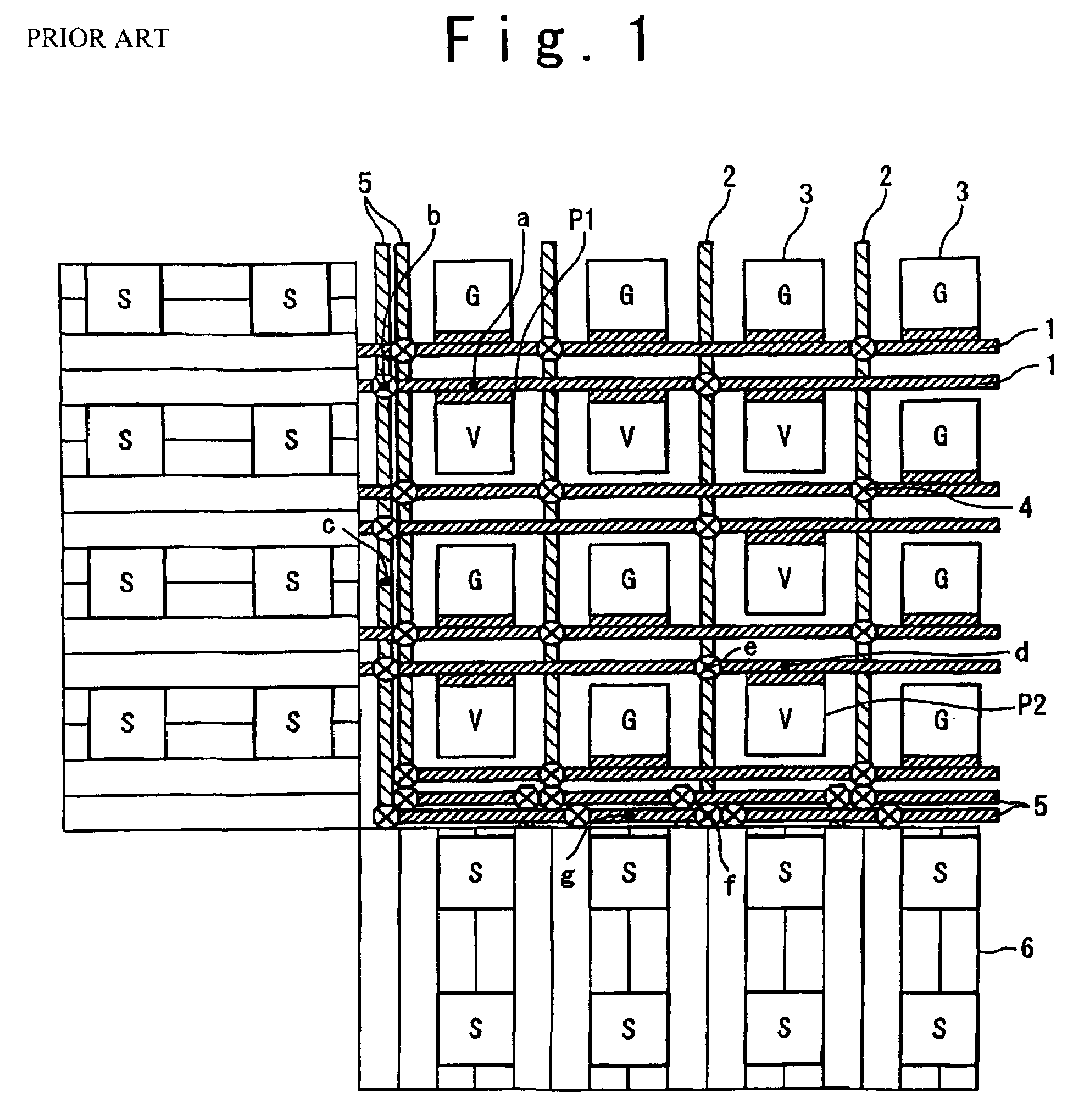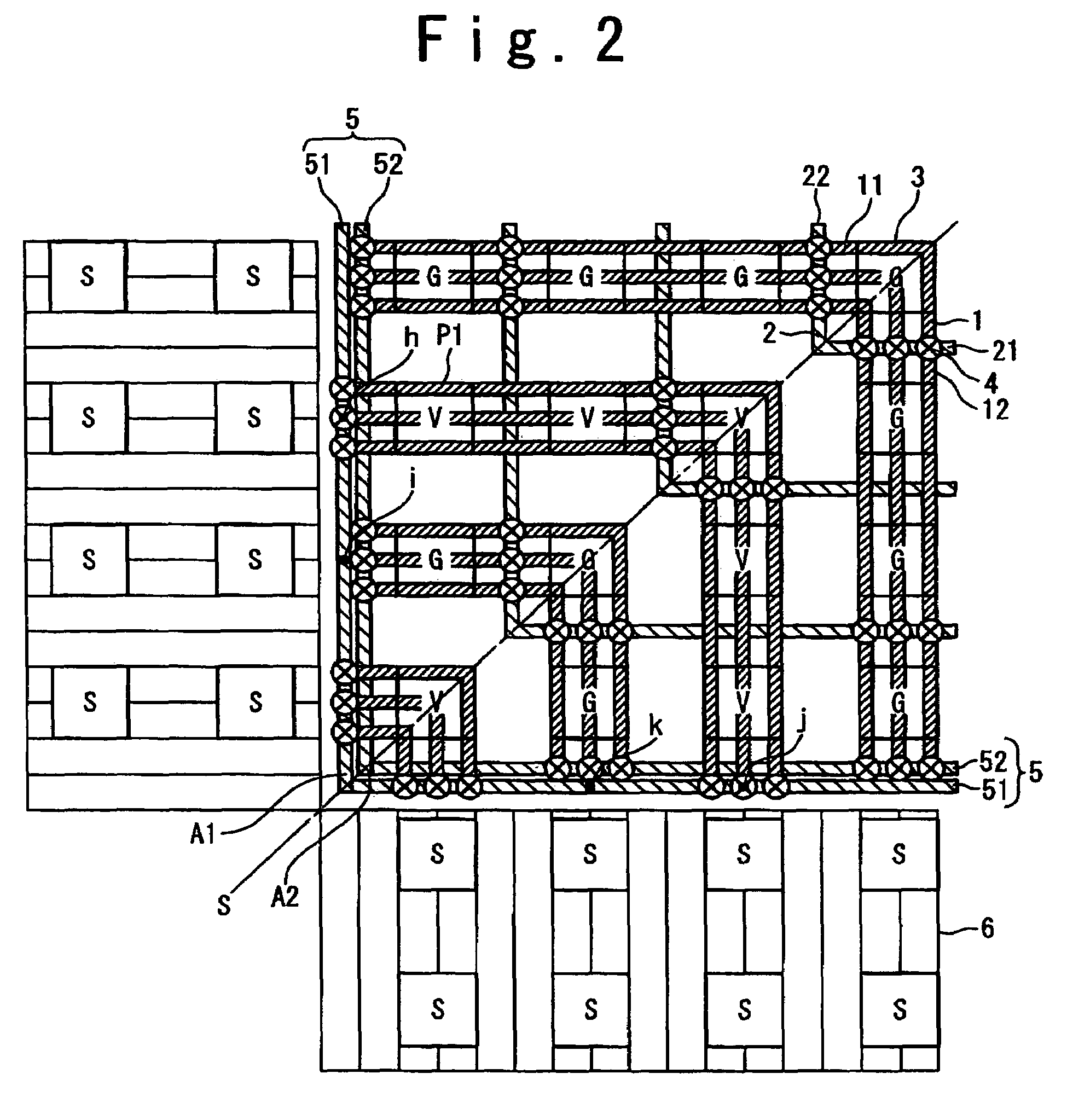Flip-chip semiconductor device with improved power pad arrangement
a technology of flip-chip semiconductors and power pads, applied in semiconductor devices, semiconductor/solid-state device details, electrical equipment, etc., can solve the problems of reducing the number of signal pads, affecting the performance of the device, so as to reduce the difference in circuit delay
- Summary
- Abstract
- Description
- Claims
- Application Information
AI Technical Summary
Benefits of technology
Problems solved by technology
Method used
Image
Examples
first embodiment
[0047]FIG. 2 illustrates an arrangement of power pads and interconnections within a flip-chip semiconductor device in a It should be noted that FIG. 2 partially illustrates the structure of the flip-chip semiconductor device in this embodiment; FIG. 2 only illustrates a one-fourth portion at the lower left of the entire flip-chip semiconductor device. The lower right, upper left and upper right portions of the semiconductor device are correspondingly configured in the right-to-left symmetry and in the top-to-bottom symmetry. These portions are not shown in FIG. 1.
[0048]The flip-chip semiconductor device in this embodiment is composed of first-level interconnections 1, second-level interconnections 2, power pads 3, via contacts 4, and chip peripheral power supply loops 5 within the internal area surrounded by an I / O region
[0049]The first-level interconnections 1 are integrated within the uppermost interconnection level of the semiconductor device. In the following, horizontally-exte...
third embodiment
[0085]FIG. 4 illustrates an exemplary arrangement of a flip-chip semiconductor device in a In the arrangement shown in FIG. 4, the first-level interconnections 1 are arranged not to cross the power pads 3. It should be noted that the FIG. 4 only illustrates the lower left portion of the semiconductor device. It should be also understood that an I / O region 6 is also provided around the internal area in this embodiment although not shown in FIG. 4.
[0086]In the third embodiment, the first-level interconnections 1 are arranged passing between adjacent power pads 3. The power pads 3 are connected with the first-level interconnections 1 through branch interconnections. The branch interconnections branching from the first-level horizontal interconnections 11 are referred to as the branch interconnections 111, and the branch interconnections branching from the first-level vertical interconnections 12 are referred to as the branch interconnections 121. In this embodiment, the branching inte...
fourth embodiment
[0090]In the fourth embodiment, the first-level interconnections 1 are paired, passing between the power pads 3. One of each paired first-level interconnections 1 is connected to the VDD pads, and the other is connected to the GND pads. In this embodiment, the VDD pads and the GND pads are connected with the associated first-level interconnections 1 through branching interconnections 111, 121.
[0091]As shown in FIG. 6, the second-level interconnections 2 are arranged identically to the arrangement in FIG. 2, except for that the second-level interconnections 2 are paired. Referring back to FIG. 5, one of the paired second-level interconnections 2 is connected with the first-level interconnections 1 connected with the VDD pads, and the other is connected with the first-level interconnections 1 connected with the GND pads.
[0092]It would be apparent that the arrangement shown in FIG. 5, in which the power pads 3, the first-level interconnections 1, the second-level interconnections 2, an...
PUM
 Login to View More
Login to View More Abstract
Description
Claims
Application Information
 Login to View More
Login to View More - R&D
- Intellectual Property
- Life Sciences
- Materials
- Tech Scout
- Unparalleled Data Quality
- Higher Quality Content
- 60% Fewer Hallucinations
Browse by: Latest US Patents, China's latest patents, Technical Efficacy Thesaurus, Application Domain, Technology Topic, Popular Technical Reports.
© 2025 PatSnap. All rights reserved.Legal|Privacy policy|Modern Slavery Act Transparency Statement|Sitemap|About US| Contact US: help@patsnap.com



